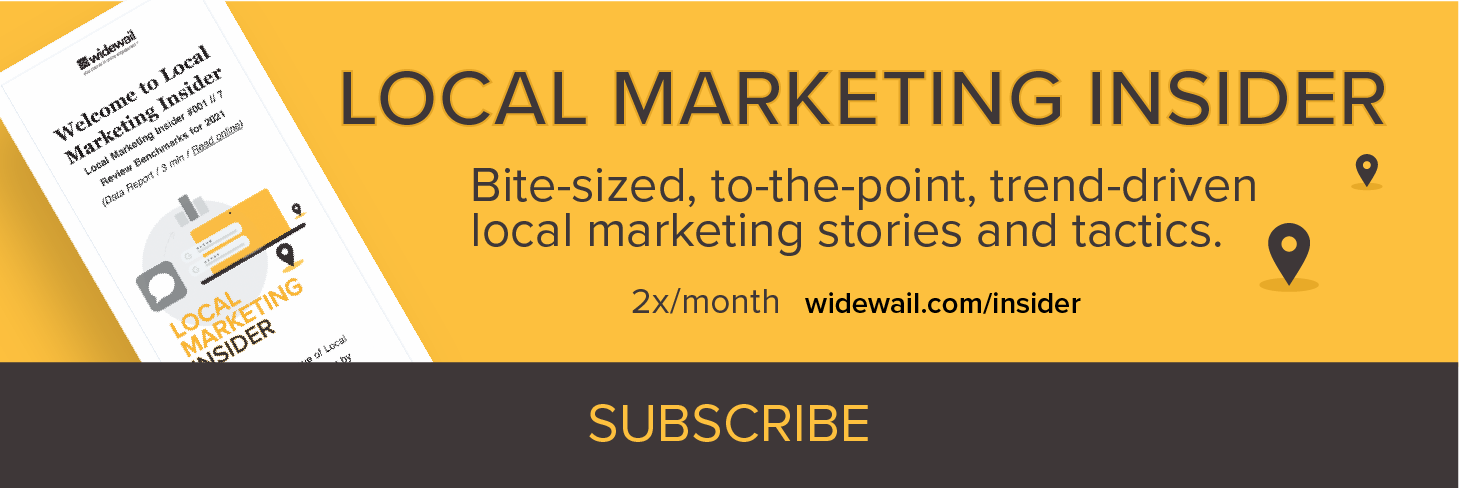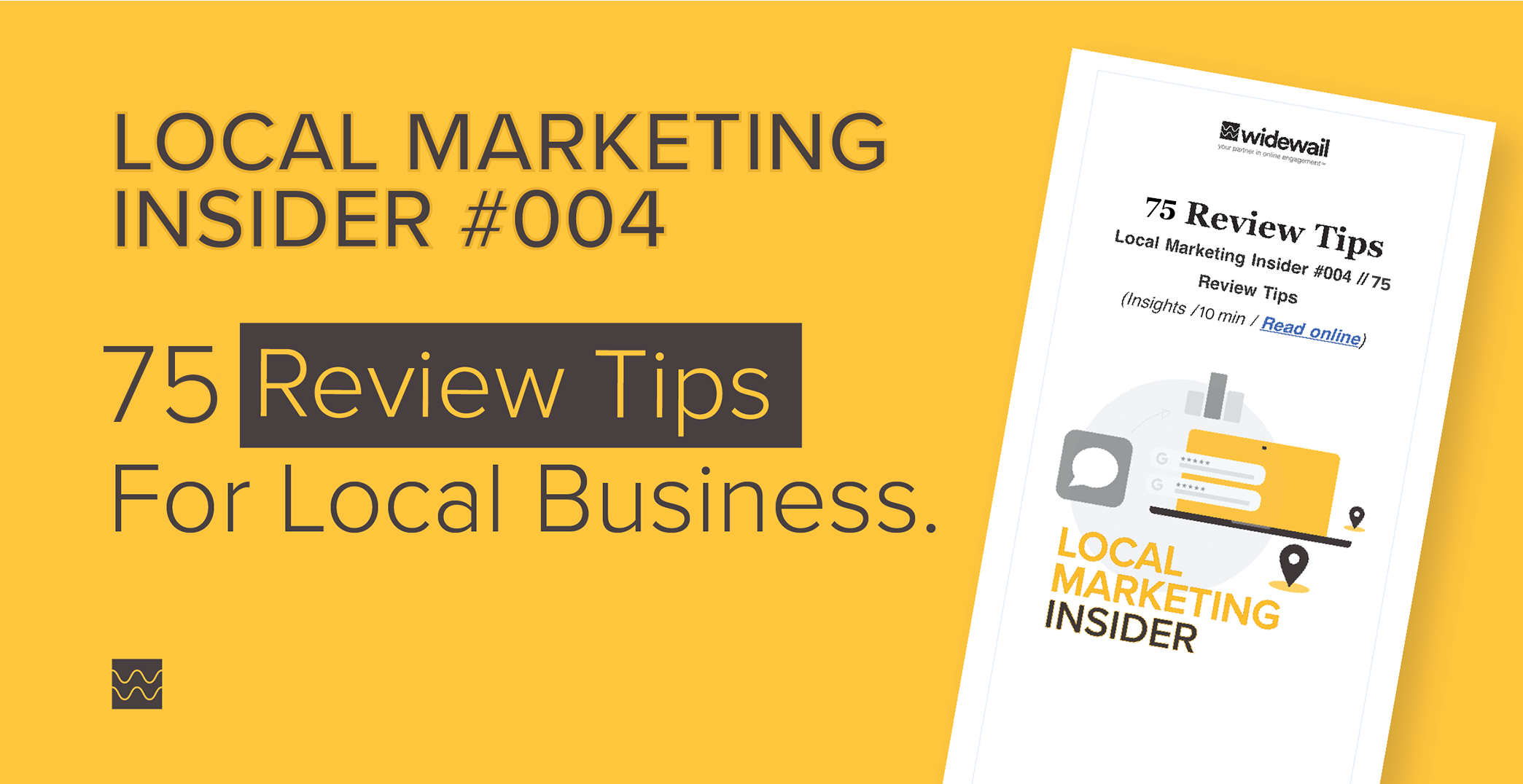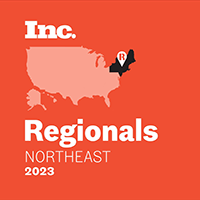*Originally posted on March 31st, 2021 and updated on April 24th, 2024. With an additional 25 reputation management tips added.
Your online reputation can make or break your business. Quickly, dramatically, and without warning - in either direction. Do we have your attention yet?
Positive feedback helps establish trust with potential customers, positioning your business as the right choice in a competitive market. Conversely, negative feedback can mean the difference between a won and lost sale.
People trust their consumer peers more than your business. An expensive ad will never impress your prospects as much as a glowing 5-star review, and while negative feedback is guaranteed, positive reviews often have to be asked for.
Therefore, remaining passive in review response management is a missed opportunity, whether your business is small or enterprise-level. You can do better. You have to do better. Widewail is here to help.
75 Online Reputation Management Best Practices
After responding to over 1 million reviews, we’ve gathered a huge collection of online reputation tips to transform how you connect with customers, help you generate more authentic feedback and give your business a competitive online advantage. All in one convenient article. Within the 75 pointers below, you'll find a wealth reputation-related guidance on:
- Review management
- Increasing review volume
- Responding to positives/negatives
- Being an authority
- Social media applications
- Use of automation and artificial Intelligence
- Strategic advantages
- Customer service
- Related efficiency processes
- Feedback repurposing
- And many more (did we mention we just updated the list to 75?)

Let’s get to it.
- Consistency is key. Stay consistent with your online reputation management strategy.
- Ask every customer for a review. Every... single... one.
- Make it easy. Ask via text/SMS.
- Create convenience. Use direct links that will land customers in the right place to leave reviews, quickly. And be creative with how you share links to your reviews.
- Show them you’re listening. If a review references a specific experience, good or bad, mention it in the response. Acknowledging customer feedback gives your business credibility and makes your responses more authentic.
- Stick out your neck. This is no time to be self-conscious. Negative reviews are assured. Positive reviews have to be requested.
- Define a process. Train employees to consistently capture accurate contact info. Also, use feedback as a training opportunity.
- Gain the inside track. An active review management strategy is still not in place for most local businesses. Be the early adopter in your space.
- More social feedback. Consider asking for feedback in the comment section of your best-performing social ads. To get more reviews, you have to take every opportunity to engage with your customers.
- Review request campaigns. Set up request campaigns and tailor the language to help get the kind of reviews you need.
- Consider the context. If it’s a product review, give them a week to use it. If it’s a haircut, ask them while they’re cashing out.
- NAP (Name, Address, Number) alignment. Make sure all of your business listings show the same and correct information.
- Monitor for malvertising. Protect your reputation by keeping an eye out for fake listings of your company.
- Listings management. Invest in a reputation management partner to monitor and maintain your listings.
- Be patient. It may take as long as 30 days for customers to leave a review. Don’t abuse your list.
- Look for patterns. While one complaint shouldn’t cause an overreaction, a trend of similar feedback requires a deeper review.
- Respect repeat customers. Don't overdo it. We recommend at least 60 days between review requests.
- Show don’t tell. Use video marketing to authentically showcase the voices of your happy customers and make your ads more persuasive.
- Automate, always. Make it as easy as looking up how many reviews came in that day.
- Avoid human error. Automate to avoid burnout or distraction.
- Avoid screen names. Don’t include impersonal internet screen names or first initials in responses. If you don’t have their first name, work around it.
- Use real names. When available, always personalize responses with the customer’s first name.
- Employ AI. While AI can make responding more efficient, reviewing responses before publishing is crucial.
- Target review requests. Ask for reviews at key lifecycle stages in the buyer’s journey. The more engaged your customers are, the more likely they are to leave positive reviews.
- Experiment and optimize. Try different review request campaigns and reporting to find the best strategy for your business.
- Customize everything. Use personalized messaging in SMS and leverage industry-specific review platforms (if relevant).
- Utilize email. Put review links in your email signature.

- Social proof. Lean into the persuasive power of social proof by combining your company’s messaging with customer testimonials to build trust.
- Embrace the ancillary. Generating more reviews will also raise star ratings and reduce the percentage of negative feedback.
- There is an ideal number of reviews. It's more than your competitors.
- Stay in compliance. Ensure your reputation management strategy is risk-free and in line with review site and FTC policies.
- Keep it current. Prospects (and Google) want to see recent review activity.
- GBP Questions & Answers. Maintaining your Google Business Profile Q&A feature is essential and another way to interact with potential customers.
- Think short-term. Set monthly goals for getting new reviews.
- Think long-term. For new businesses - start with getting to 100 reviews. Then 1000.
- Think big picture. Regular review management should be part of an overall customer service strategy.
- Stay timely. Review frequency improves local organic search visibility. Start with 20/month.
- Spread the love. Responding to only negative reviews risks elevating their visibility on your reviews page.
- Reviews drive business. Great reviews can help generate leads and eventually more customers.
- Control the narrative. Daily attention to customer reviews eliminates highly visible, festering negative feedback for prospects to see and use as proof to look elsewhere.

- Learn from reviews. Use reviews to make constructive changes and manage your business more effectively.
- Encourage happy voices. More happy customers exist. Otherwise, you’d be out of business. Harness their influence.
- Passive measures. Utilize QR codes at the point of purchase, on receipts, or on business cards to share your Google reviews link.
- Be an authority. Ratings/reviews translate to trustworthiness and consumer perception and should be a focus of any online reputation management strategy.
- Showcase positive feedback. Create a section on your website to show off happy customer reviews and testimonials. You can also highlight positive reviews by sharing them on social media.
- Mind the store. Volume and frequency display a strong customer service focus.
- Respond to every review. No response is a response - and never a good look.
- Respond on socials. Respond to any mentions, direct messages or comments across your social media pages.
- Think about the next customer. Your reviews have two audiences, prospects and customers.
- Higher volume. Higher ratings have a slight positive correlation with review volume. More reviews = Higher rating
- Widen your net. Reviews are more important than proximity for local competitive SEO in 2021. (source: Moz)
- (S)eize (E)very (O)pportunity. For SEO, volume, frequency, star rating, and response times are review metrics that influence local ranking. Don't obsess over any one at the expense of the others.
- Hand over the keys. The average local marketer spends 17% of their time managing reviews. Do the math. (source: Brightlocal)
- Shoot for the stars. World-class local businesses achieve <10% negative reviews (3 stars or less).
- Don’t get filtered out. Google will hide your listing for “best of” searches if your rating is <4.0.
- Be speedy. Turn review responses around fast. Set a goal of 24 hours.
- Consider it a conversation. Reviews are often a near-real-time feedback tool. Don’t leave them hanging.
- Take it offline. When responding to negative reviews, empathize - but don't accept responsibility publicly. Request further discussion over the phone or via email.
- Be vague but direct. When responding to negative reviews, be specific to the issue at hand, but avoid using SEO phrases or keywords in responses to negative feedback.
- Stay composed. It’s human nature that unhappy customers are more motivated to leave reviews than happy ones. Keep personal reactions out of public view.
- Pick your battles. Take a break before responding to a review that hits below the belt, or bounce the situation off a colleague.
- Consider the consequences. Review responses are forever.
- Turn it around. Every negative review is an opportunity to show the world how seriously your business takes good customer service.
- Call in a ringer. Third-party vendors won’t take anything personally and will ensure your responses are always measured and on-brand.
- Be gracious. Your customers aren’t obliged to take the time to leave a review. When they do, especially when positive, acknowledge that effort.
- Encourage feedback. Ask for reviews on your website or social media pages. It’s a great opportunity to reach customers when they are engaged and boost your reputation.
- Pay it forward. Thoughtful responses to positive feedback are more likely to encourage the voice of other satisfied customers. Positive voices are influential.
- Blog frequently. Maintaining an active blog helps showcase your industry expertise and engage with customers. By establishing yourself as a resource, you establish trust.
- Define a brand language. If there are catchphrases or selling points you deliberately work into marketing, put them in responses, too.
- Be the brand. Mention your business name and products in review responses whenever possible. But be tasteful.

- Use Staff names. Use your team member's name in review responses anytime they are mentioned by a reviewer. It adds a personal touch and makes your responses feel more authentic.
- Route appropriately. If your business has multiple GMB listings by department (i.e. automotive service vs. sales), your Google review management strategy should include a system to route reviews to the correct recipient.
- Know your platforms. Because Yelp does not allow review solicitation, the scores are usually lower. Facebook calls their reviews “recommendations”. Be aware of fundamental differences between popular hotspots.
- Adapt as needed. Continuously monitor your online reputation and adapt as needed.
- 2024 is a great year to get started.
Phew. That was a long one. But admittedly a lot of fun to write. Thanks for reading.
This post was originally part of our Local Marketing Insider newsletter. If you'd like to receive these articles directly to your phone in an easy-to-read mobile version, sign up here.
If you enjoyed this issue please share it with friends or colleagues.
*Originally posted on March 31st, 2021 and updated on April 24th, 2024.

















.png)

U3GM Blog Post Comments